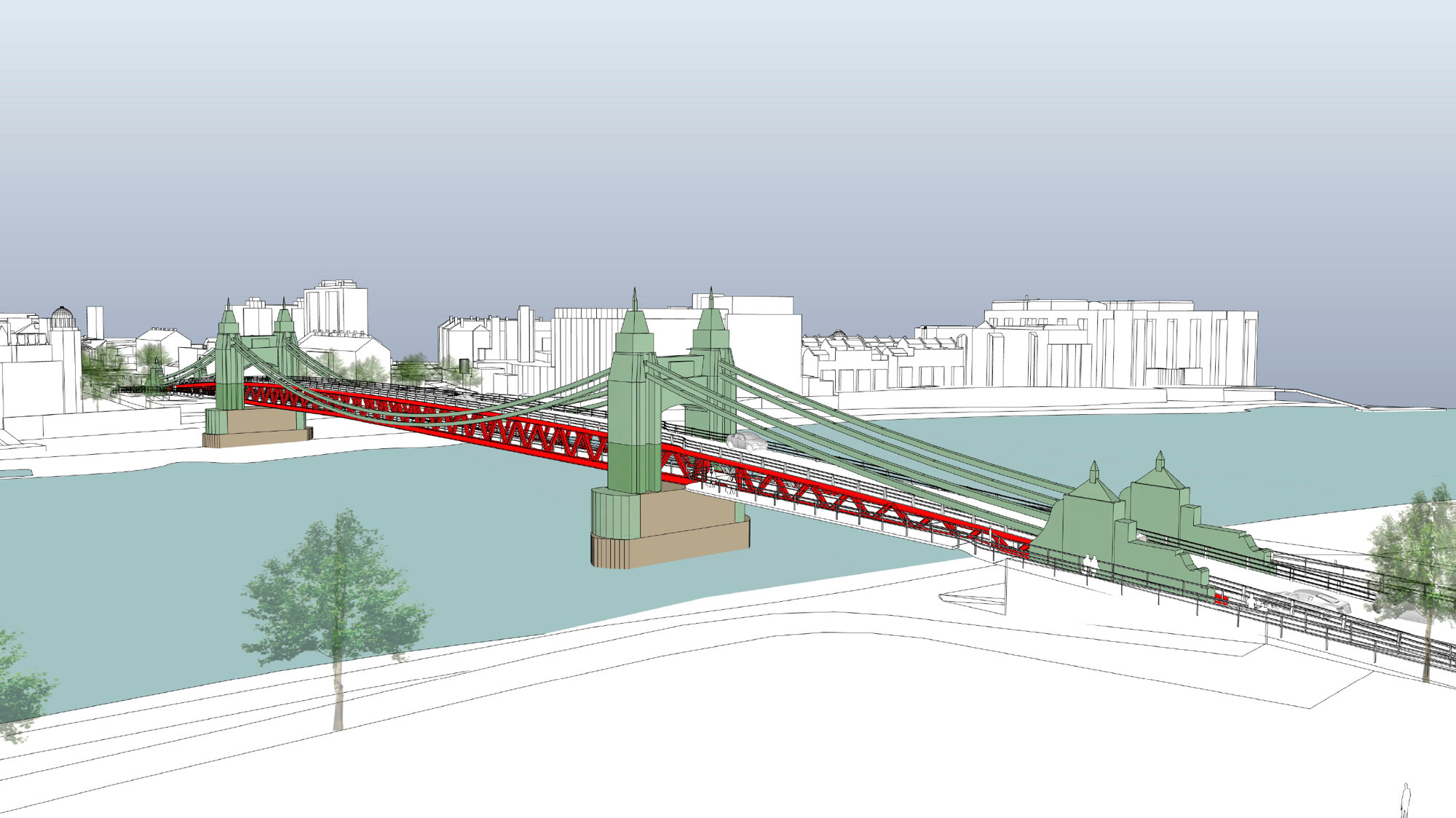Hammersmith Bridge could potentially reopen for pedestrians and cyclists next summer, and motor vehicles two months later, under radical plans presented to Hammersmith and Fulham Council.
A six-week long technical study conducted jointly by the integrated team of architects and engineers at Foster + Partners, and bridge engineers COWI, has concluded that a temporary double-decker crossing is feasible using the existing bridge foundations.
Roger Ridsdill Smith, Head of Structural Engineering, Foster + Partners: “The feasibility study supports the technical viability of the proposed temporary crossing, showing it that it has the potential to be significantly cheaper than a scheme that repairs the bridge in situ. It also offers the possibility of the bridge reopening earlier than previously envisaged. The feasibility study was expedited by the extensive investigations and analysis already carried out on the existing structure and we are grateful for the cooperation of all of the parties involved.”
Luke Fox, Senior Executive Partner, Foster + Partners: “In addition to proving the viability of the scheme we have continued to refine the design and reduce the impact of the temporary structure. We are encouraged by the initial advice and feedback from stakeholders regarding the scheme. We are now a step closer to resolving a major transportation challenge in London and restoring a unique symbol of our engineering heritage.”
The double-decker scheme would involve launching a truss structure above the existing road deck with a lower level for pedestrians and cyclists and an upper level for cars and buses. The study confirmed that the existing foundations could support the extra load of the temporary truss and that significant savings could be made on both the support and strengthening work required to the existing bridge and the cost of the full restoration. Elements of the bridge that need repair, including the decking, would be lifted away using the temporary bridge as a works platform and transported by barges to an off-site facility for safe repair and restoration.
David MacKenzie, Executive Director, COWI: ‘Offsite refurbishment of the existing structure is considered to be safer, less disruptive and more sustainable. Carrying out the work in internal protected conditions rather than onsite - outside and over the river - will enable us to achieve a higher quality of workmanship and reduce the need for extensive maintenance in the future.’
As well as delivering vehicle access earlier than the current restoration plan, the proposal has been initially costed at around £100m - offering a potential saving of approximately £40m.









